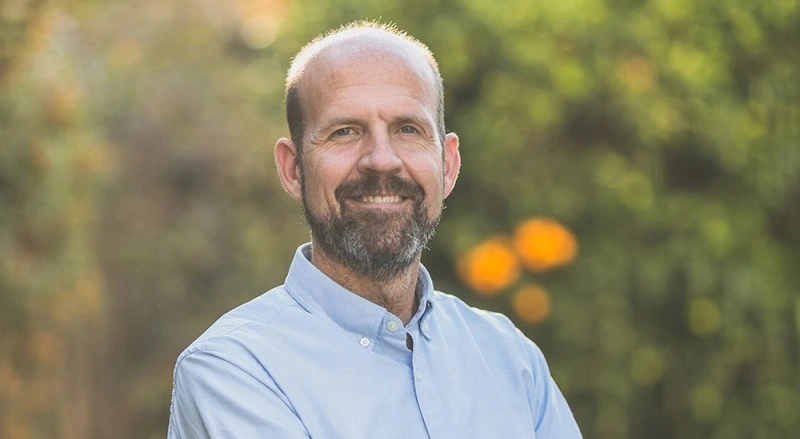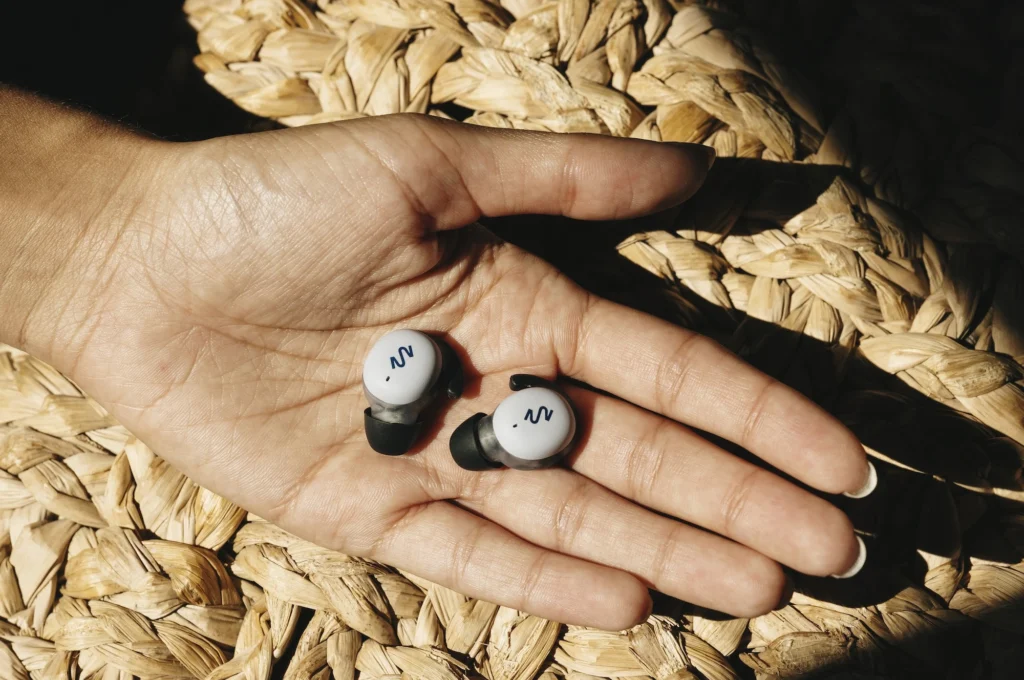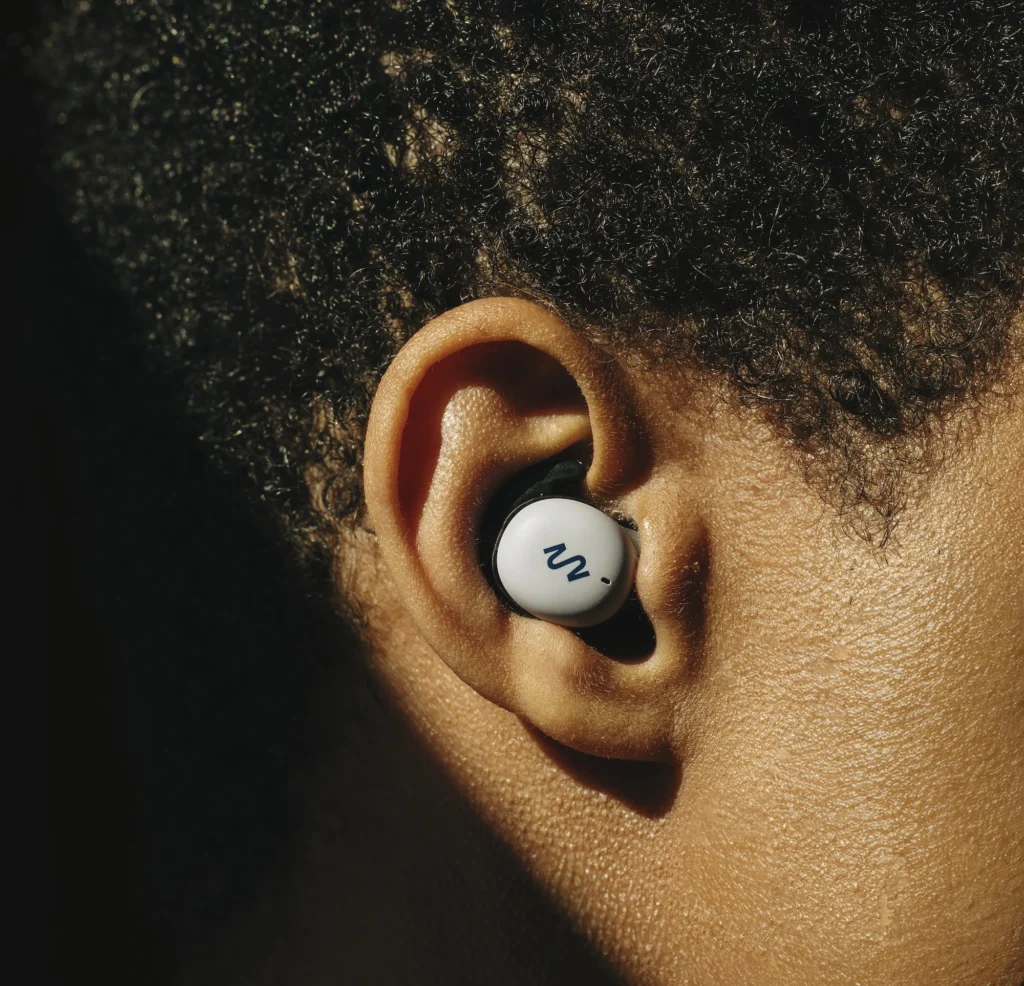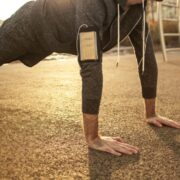CEO Corner: NextSense’s Jonathan “JB” Berent on the Future of Brain Optimization

Founded by a former Google exec and incubated by Google X, NextSense’s debut product houses advanced biosensing tech inside form-fitting earbuds to help people optimize their sleep
For Jonathan “JB” Berent, it pays to follow your dreams — literally.
During his time as a Google executive, Berent pitched the company’s then-new incubator program on an idea for a product that could improve people’s sleep through technology.
That idea turned into NextSense, a wellness tech company whose debut product, Smartbuds, uses advanced biosensing tech and curated sounds, all housed inside form-fitting earbuds, to help users optimize their sleep quality.
In time, Berent believes the company can leverage its tech to create other products that can help people to do everything from quit smoking to work up the courage to talk with their spouse about a sensitive subject.
With Smartbuds set to start shipping soon, Berent sat down with Athletech News to discuss his journey in founding NextSense, what makes the company’s new earbuds unlike anything on the market today and what’s coming next in brain-sensing technology.
The following conversation has been lightly edited for clarity and length.
Athletech News: Can you tell us about your background and what led you to create NextSense?
Jonathan “JB” Berent: I had kind of a traditional background up until about seven years ago. I did a lot of different things in tech, from product management at an early dot-com to sales and marketing at a Kleiner Perkins-backed startup. I also managed inside sales teams at Oracle. I then found out that Google was looking for people with sales backgrounds, so I joined what was called Google Offers, which was a competitor to Groupon. I then led a team at Google’s Kickstart program, which helped small and medium-sized businesses. I felt a lot of pride and accomplishment in that work, but I got bored. So if you ask what led to NextSense, the cheeky answer is boredom. So I pitched my idea for NextSense, which was accepted at Google X (today called X, the Moonshot Factory), and my whole career changed. I went down this path of, really, my passion, which has been sleep and dreams since a very early age.

ATN: How did sleep and dreams become your passion?
JB: Even before college, I was curious. I came across this book, “The Shaping Room.” It was a fictional book, but it was about the idea that there’s this dream escape where you could shape your dreams. And then one day, I found Stephen LaBerge (and Howard Rheingold’s) “Exploring the World of Lucid Dreaming,” in a bookstore, which was my first exposure to lucid dreaming — people just take for granted that you dream at night, but I learned from Stephen that you could actually do something with that time. I actually met Stephen while I was a freshman at Stanford University, which began a long friendship. Twenty years later, he gave me the seminal paper that I was able to present to Google X.
ATN: What was the process like in pitching to Google X and then creating NextSense?
JB: I gave them the paper, and they gave me a bit of funding. We started the project with this idea of manipulating sleep, but they wanted me to focus more on the future of computing — they were more interested in that than the future of sleep. When COVID hit, they shut the project down, and I said, “What about me starting my own company?” This was September of 2020 and COVID was in full force, so it wasn’t a great time to start a company. They proposed what was sort of a shared-risk model: “leave Google, and we’ll give you a piece of paper and a PowerPoint that you can go raise money on. And if you can get money, we’ll then push the technology into your new company for a small piece of equity.”
I found Ascension Ventures, which agreed to put $5 million into the company. In February of 2021, I went back to Google, and then they spun that technology into the company, and it was for less than 4% equity, so I think it was a very good deal. From Google’s standpoint, hopefully, I’ll make them very proud.
ATN: There are a lot of potential ways to affect sleep through technology. Why did you choose Smartbuds as NextSense’s first product?
JB: The most compelling research over the last decade on enhancing sleep shows that when you can detect when somebody is in what’s called N3 sleep (the deepest stage of non-REM sleep), there are these slow oscillations that are happening, and these slow oscillations are indicative of processes of consolidation in the mind. Scientists have found that you can influence those processes, and you can make them, essentially, more effective without more sleep. That’s a game-changer.
So the science is well known and very exciting, but the challenge has been that the products on the market have all been headbands, or almost helmets. Those aren’t great for sleeping. With Smartbuds, we have a super-small form factor, and we can play audio. So that’s our differentiator.
How did we do it? If you think about where breakthroughs have come through, we tend to think of them in software and not hardware. But if you really zoom out, breakthroughs come through material science. Silicon, obviously being a big one, as well as the technology for touchscreens. We believe that the next breakthrough in biosensing is coming through a material-science breakthrough that we happen to own. This allows for our very small form factor. Sony, Samsung, Apple and Google have all invited us to their headquarters.

ATN: What makes Smartbuds different from other headphones and sleep-optimization products currently on the market?
JB: First, they’ll help people fall asleep. The promise would be, “Sleep the same way you’ve been sleeping, and we’re going to do some things in the middle of the night that are going to make that sleep just a little bit better, which should result in you feeling better the next day.”
But we’re also positioning this as a daytime bud as well. They’ll sound like your AirPods, but they’ll also help you focus during the day.
I like to say we fit into three categories: sleep buds, focus and headphones that sound really good. Those three broad categories usher in this new platform that we’re calling Smartbuds.
ATN: What’s your target market as you launch Smartbuds?
JB: We’ve come up with a number of ICPs (ideal customer profiles). I think our most tightly fit ICP is a professional male, aged 35 to 45, who is very tech savvy but may not have an Oura ring or a Whoop. He’s really looking to solve a problem, which is that he needs more energy during the day to be his best self. That person might have young kids at home. Our market research shows that that demographic has a high intent to buy, as well as a pretty high tolerance for price.

ATN: The sleep tech market has blown up in recent years, thanks in part to EEG wearables like Smartbuds. How much more advanced can things get over the coming years?
JB: It’s a really interesting question. I think there is an era of EEG technology that’s coming. Even Apple has published a patent on it, so that tells you something.
What’s coming? It might look something like this: What if you could change your mood as easily as you change your mind? That’s essentially what EEG with AI could do. I like to call it a mind mirror. If you think about what a physical mirror does for you, if you’re going to the beach, you’re probably going to stand in a mirror. “How do I look in this bathing suit?” You’re going to use a physical mirror to make sure your clothes represent the right occasion. I think EEG is going to make sure your mind matches the occasion. If it’s a difficult conversation with a partner that takes a certain state of mind, if it’s a presentation, that takes a different state of mind, or if it’s falling asleep, that takes a different state of mind. What if it were that easy to say, “Hey, Siri, put me in a focused mood,” and then it actually puts you in a focused mood? That’s what’s coming.
ATN: Smartbuds are set to start shipping soon. Looking even further ahead, what’s your ultimate vision for NextSense?
JB: My ultimate vision is a smart human. I think that comes from realizing we have a lot of IP that goes beyond just earbuds, including the material science breakthrough that we talked about. We have patents that integrate that into clothing, for example.
As we think about the smart human, I think about how we can take the biosignals that aren’t just from the brain, but more collectively, and use that to help people achieve their goals. That could be everything from quitting smoking to learning to meditate to not being as triggered when driving. How can we leverage all that biosensing has to offer to help people achieve those goals?



